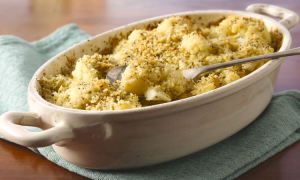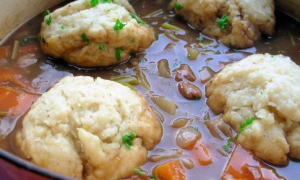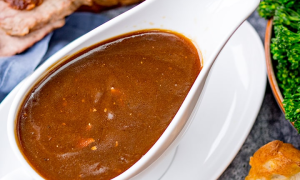The Allure Of Homemade Chicken Stock
Chicken stock, the golden elixir that forms the bedrock of countless culinary creations, is more than just a cooking ingredient; it’s a symphony of flavors, a testament to the transformative power of simple ingredients. Its rich, savory depth, its ability to elevate the most ordinary dishes, and its versatility across cuisines make it an indispensable asset in any kitchen.

While store-bought chicken stock offers convenience, nothing quite captures the essence of homemade chicken stock. The process of crafting this culinary skull is not merely a task; it’s an opportunity to connect with the origins of flavor, to appreciate the alchemy of simmering bones, vegetables, and aromatics into a liquid symphony.
A Culinary Journey: Crafting Homemade Chicken Stock
Embarking on the culinary journey of crafting homemade chicken stock is a rewarding experience, one that yields both a flavorful ingredient and a deeper appreciation for the art of cooking. The process is simple yet transformative, requiring only a handful of readily available ingredients and a touch of patience.
Gathering the Essence of Flavor
The foundation of homemade chicken stock lies in the chicken bones themselves. These humble remnants, often overlooked and discarded, hold the key to unlocking a symphony of flavors. Save the bones from your roasted or cooked chicken, ensuring that they are free of excess meat and skin.
Aromatic Companions: Vegetables and Herbs
The symphony of flavors in chicken stock is further enriched by the addition of vegetables and herbs. Carrots, celery, and onions form the aromatic trio, lending sweetness and earthy notes to the broth. Parsley, thyme, and bay leaf contribute their subtle, herbaceous nuances, adding depth and complexity.
The Simmering Symphony: Unveiling Culinary Treasures
With the essential ingredients assembled, the true magic unfolds in the simmering process. Gently heat the chicken bones, vegetables, and aromatics in a large pot, allowing the flavors to meld and mingle. As the broth simmers, skim off any impurities that rise to the surface, ensuring a clean and flavorful liquid.
The simmering time varies depending on the desired intensity of the stock. For a lighter stock, simmer for two to three hours. For a richer, more concentrated stock, extend the simmering time to four to five hours.
Straining and Seasoning: Refining the Culinary Gem
Once the simmering has concluded, carefully strain the stock through a fine-mesh strainer, removing any remaining solids. Allow the stock to cool slightly before seasoning with salt and pepper to taste. For additional flavor enhancement, consider adding a touch of fresh herbs or a sprinkle of dried herbs.
Preserving The Culinary Bounty: Storage Tips
After the simmering process is complete and the stock has cooled slightly, it’s time to store it properly to ensure its longevity and maintain its culinary excellence. Here are some tips for storing chicken stock:
Allow the stock to cool completely: Before storing the stock, let it cool completely to room temperature. This prevents the growth of bacteria and ensures the stock’s freshness.
Transfer to airtight containers: Once cooled, pour the stock into airtight containers or jars. Glass jars are ideal for storing stock as they don’t absorb flavors or odors. Plastic containers with tight-fitting lids are also acceptable.
Label and date the containers: Label the containers clearly with the contents and the date they were prepared. This helps you keep track of the stock’s freshness and use it before it spoils.
Refrigerate or freeze: Refrigerated stock will last for up to a week. If you want to store the stock for longer, you can freeze it for up to three months.
Suggestions For Using Chicken Stock
Chicken stock is a versatile ingredient that can be used in a variety of dishes. Here are some suggestions for using chicken stock:
Soups and stews: Chicken stock is a staple ingredient in soups and stews. It provides a rich, flavorful base for these hearty dishes.
Sauces and gravies: Chicken stock is also a key ingredient in sauces and gravies. It adds depth and complexity to these flavorful accompaniments.
Rice and pasta dishes: A splash of chicken stock can elevate rice and pasta dishes, adding a savory umami flavor.
Vegetable stir-fries: Chicken stock can also be used in vegetable stir-fries, providing a depth of flavor that enhances the vegetables.
Deglazing pans: Deglazing pans with chicken stock is a great way to loosen and remove stuck-on food particles, adding flavor to the pan sauce.
Poaching eggs and vegetables: Chicken stock is a flavorful liquid for poaching eggs and vegetables, imparting a delicate flavor.
Flavoring rice and pasta cooking water: Adding chicken stock to the cooking water for rice or pasta can infuse the grains with a rich, savory flavor.
Basting meat and poultry: Basting meat and poultry with chicken stock during cooking keeps them moist and adds flavor.
Making bread dough: Chicken stock can be used in bread dough to add moisture and flavor.
Marinating ingredients: Chicken stock can be used in marinades to add flavor and moisture to meat, poultry, and vegetables.






